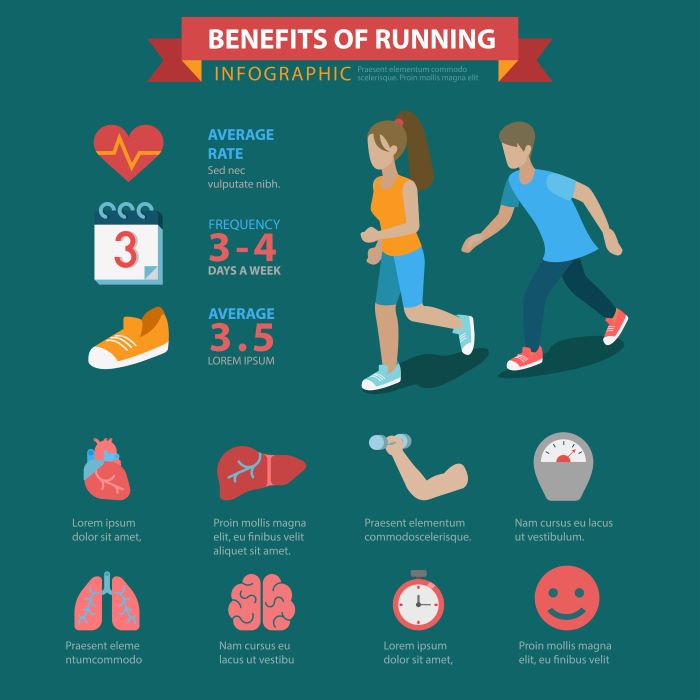In the world of running, recovery run cadence plays a crucial role in enhancing overall performance. This rhythmic aspect of running is not just about keeping a steady pace; it’s about allowing your body to heal and rejuvenate after intense workouts. Understanding this concept can significantly influence how you approach your training.
When your body undergoes strenuous activities like speed work or long runs, it naturally incurs muscle fatigue and microscopic injuries. This is where the recovery run comes into play. By incorporating a well-timed recovery run into your routine, you promote blood flow to your muscles, helping to flush out toxins and deliver essential nutrients for repair.
Here are some key benefits of focusing on recovery run cadence:
- Increased Muscle Recovery: A proper cadence encourages faster recovery by reducing soreness and stiffness.
- Improved Aerobic Capacity: Maintaining a relaxed pace during recovery runs enhances your overall endurance.
- Injury Prevention: By incorporating recovery runs, you lower the risk of overuse injuries that can arise from high-intensity training.
To master your recovery run cadence, aim for a pace that feels easy and comfortable. This will not only aid in recovery but also prepare you for your next challenging workout. Ready to dive deeper into optimizing your running routine? Visit our website to learn more and get started today! Click here.
How Recovery Run Cadence Affects Your Performance

Your recovery run cadence does not merely serve as a cooldown; it significantly affects your overall running performance. Understanding how this specific cadence influences your body’s recovery mechanisms can help you train smarter and more effectively.
First and foremost, the right recovery run cadence promotes efficient muscle recovery. When you run at an appropriate pace, your heart rate remains elevated without causing additional strain on your muscles. This encourages blood flow, which is essential for transporting oxygen and nutrients to fatigued muscles, speeding up the healing process and reducing soreness.
Moreover, a consistent recovery run cadence aids in developing neuromuscular coordination. By practicing a smooth, relaxed running rhythm, you reinforce proper running mechanics, which translates into more efficient movements during higher intensity workouts. This improved coordination can lead to faster race times and reduced fatigue during longer runs.
Additionally, focusing on recovery run cadence can enhance your mental resilience. These runs provide a low-pressure environment to reflect on your training, allowing you to mentally prepare for more challenging workouts. It can also serve as a reminder that recovery is just as critical as the effort put into speed and distance.
In summary, paying attention to the nuances of your recovery run cadence can yield significant benefits that extend beyond the immediate aftermath of a workout, ultimately contributing to improved performance on race day.
Tips for Finding Your Ideal Recovery Run Cadence
Finding your ideal recovery run cadence is crucial for optimizing your performance and ensuring effective recovery. Here are some practical tips to help you discover the cadence that works best for you:
- Listen to Your Body: Pay attention to how your body feels during different paces. A recovery run should feel comfortable and relaxed. If you find yourself struggling to maintain a conversation, you might be running too fast.
- Monitor Your Heart Rate: Use a heart rate monitor to track your heart rate during recovery runs. Aim to keep it at 60-70% of your maximum heart rate. This range typically indicates a proper recovery pace.
- Experiment with Different Cadences: Try varying your cadence during recovery runs. Count how many steps you take per minute and test different rhythms. A typical recovery cadence ranges from 160 to 180 steps per minute, but it can vary based on individual preferences and fitness levels.
- Incorporate Form Drills: Engage in form drills that emphasize a relaxed posture and efficient foot strike. Practicing these drills can help you find a more natural recovery cadence.
- Use a Metronome or Music: Consider using a metronome or music with a specific beat to guide your cadence. This can help you maintain a consistent rhythm throughout your run.
By applying these tips, you can fine-tune your recovery run cadence, enabling you to maximize recovery while still enjoying the benefits of your runs.
Incorporating Recovery Runs into Your Training Plan

Incorporating recovery runs into your training plan is essential for enhancing overall performance and preventing burnout. Here’s how to effectively integrate these runs into your routine:
- Schedule Recovery Runs: Designate specific days for recovery runs within your training week. Typically, these runs should follow your more intense workouts, such as speed workouts or long runs, to promote proper recovery.
- Keep It Short: Recovery runs should be shorter in distance compared to your regular workouts. Aim for 30-45 minutes at an easy pace to allow your body to recover without adding excessive fatigue.
- Prioritize Pace: Remember that the primary goal of a recovery run is to aid in recovery, so focus on maintaining a comfortable pace. This should be significantly slower than your race or tempo pace.
- Include Variety: To keep your training plan engaging, mix up your recovery runs by incorporating different routes, terrains, or even trails. This variety can enhance your running experience while still serving the recovery purpose.
- Listen to Your Body: It’s essential to remain adaptable. If your body signals fatigue or soreness, consider adjusting your training plan to include more recovery runs or reduce intensity elsewhere.
By thoughtfully incorporating recovery runs into your training plan, you can enhance your fitness levels while minimizing the risk of injury, allowing you to achieve your running goals more effectively.
Common Mistakes to Avoid When Running Recovery Runs

While recovery runs are a vital component of any training regimen, there are several common mistakes that runners often make, which can hinder their recovery and overall performance. Avoiding these pitfalls will help you maximize the benefits of your recovery runs:
- Running Too Fast: One of the biggest mistakes is treating recovery runs like tempo workouts. Remember, these runs should be at a significantly slower pace. Pushing yourself too hard negates the recovery benefits and can lead to fatigue.
- Neglecting Warm-Up and Cool-Down: Skipping warm-up and cool-down routines can increase the risk of injury. Always make time for a proper warm-up before your recovery run and a cool-down afterward to facilitate muscle recovery.
- Ignoring Body Signals: Listening to your body is crucial. If you feel pain, excessive fatigue, or discomfort, don’t hesitate to modify your plan. Recovery runs are meant to aid recovery, not to exacerbate injuries.
- Overdoing Frequency: While recovery runs are important, over-scheduling them can lead to overtraining. Aim for 1-2 recovery runs per week, depending on your overall training volume and intensity.
- Forgetting Hydration and Nutrition: Adequate hydration and nutrition are essential for recovery. Failing to replenish fluids and nutrients after a recovery run can slow down the recovery process.
By being aware of these common mistakes, you can ensure that your recovery runs are effective and contribute positively to your training journey.
Tracking Progress and Adjusting Your Cadence

Tracking your progress is essential to mastering your recovery run cadence. By keeping a close eye on your performance metrics, you can make informed adjustments to your training plan, ensuring optimal recovery and enhanced running performance. Here are some effective strategies to track your progress:
- Use a Running App: Utilize running apps or wearable technology to monitor your pace, distance, and cadence during recovery runs. Many apps provide insights into your overall running efficiency and can help identify trends over time.
- Maintain a Training Journal: Keep a detailed log of your runs, noting the pace, duration, and how you felt during each recovery session. This will help you recognize patterns in your performance and physical response.
- Set Specific Goals: Establish clear, achievable goals for your recovery runs. This could include gradually increasing your distance or improving your cadence without sacrificing pace.
- Regularly Reassess Your Cadence: Every few weeks, evaluate your recovery run cadence. If you notice that you’re consistently running faster than intended, it might be time to adjust your training plan.
Adjusting your cadence based on data and feedback will not only enhance your recovery but also prepare you for more intense training sessions ahead. Remember, the journey of a runner is continuous, and being adaptable is key.
Visit our website to learn more and get started today! Click here.


